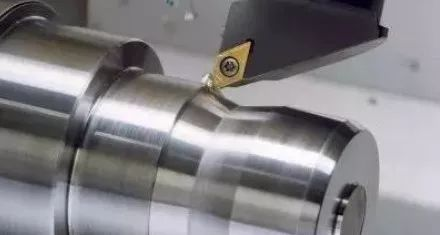Precision is used to indicate the fineness of the workpiece product. It is a special term for evaluating the geometric parameters of the machining surface and an important indicator for measuring the performance of CNC machining centers. Generally speaking, machining accuracy is measured by tolerance grade. The lower the grade, the higher the accuracy. Turning, milling, planing, grinding, drilling, and boring are common machining forms of CNC machining centers. So what machining accuracy should these machining processes achieve?
1.Turning accuracy

Turning refers to the cutting process in which the workpiece rotates and the turning tool moves in a straight line or curve in the plane, which is used to process the inner and outer cylindrical surfaces, end faces, conical surfaces, forming surfaces and threads of the workpiece.
The surface roughness of turning is 1.6-0.8μm.
Rough turning requires the use of large cutting depth and large feed rate to improve turning efficiency without reducing the cutting speed, and the surface roughness requirement is 20-10um.
Xinfa CNC tools have the characteristics of good quality and low price. For details, please visit: CNC Tools Manufacturers - China CNC Tools Factory & Suppliers (xinfatools.com)
Semi-finishing and finishing turning try to use high speed and small feed rate and cutting depth, and the surface roughness is 10-0.16um.
The finely polished diamond turning tool on the high-precision lathe can turn non-ferrous metal workpieces at high speed, with a surface roughness of 0.04-0.01um. This kind of turning is also called "mirror turning".
2. Milling precision milling refers to the use of rotating multi-blade tools to cut workpieces, which is a highly efficient processing method.
Suitable for processing planes, grooves, and various splines, gears, thread molds and other special surfaces.
The surface roughness of milling is generally 6.3-1.6μm. The surface roughness of rough milling is 5-20μm.
The surface roughness of semi-finishing milling is 2.5-10μm. The surface roughness of fine milling is 0.63-5μm.
3. Planing accuracy
Planing is a cutting method that uses a planer to make horizontal relative linear reciprocating motion on the workpiece, mainly used for the shape processing of parts. The surface roughness of planing is Ra6.3-1.6μm.
The surface roughness of rough planing is 25-12.5μm. The surface roughness of semi-finishing planing is 6.2-3.2μm. The surface roughness of fine planing is 3.2-1.6μm.
4. Grinding accuracy Grinding refers to the processing method of using abrasives and grinding tools to cut off excess material on the workpiece. It belongs to fine processing and is widely used in the machinery manufacturing industry.
Grinding is usually used for semi-finishing and finishing, and the surface roughness is generally 1.25-0.16μm.
The surface roughness of precision grinding is 0.16-0.04μm.
The surface roughness of ultra-precision grinding is 0.04-0.01μm. The surface roughness of mirror grinding can reach less than 0.01μm.
5. Boring
It is a cutting process that uses a tool to enlarge the inner diameter of a hole or other circular contour. Its application range generally ranges from semi-roughing to finishing. The tool used is usually a single-edged boring tool (called a boring bar).
The boring accuracy of steel materials can generally reach 2.5-0.16μm.
The processing accuracy of precision boring can reach 0.63-0.08μm.
Post time: Sep-03-2024



